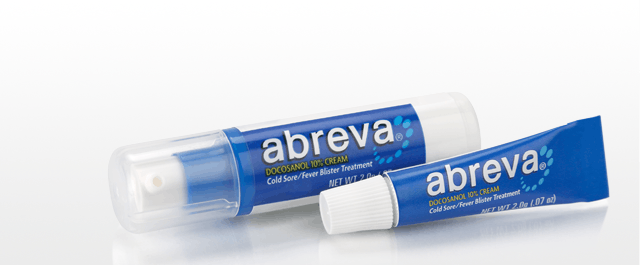Understanding Cold Sores: Causes, Symptoms, and Treatments
A cold sore, also known as oral herpes or a fever blister, is an itchy, painful blister that usually appears on your lip or around your mouth. Cold sore blisters typically go away on their own within a couple of weeks.v A cold sore is sometimes confused with a canker sore, but it’s easy to tell the difference. A canker sore is always inside your mouth and doesn’t have the tingling, itching, or burning sensation that precedes a cold sore.
What Causes Cold Sores?
The herpes simplex virus – known as HSV-1 and HSV-2 – is the sole cause of cold sores. However, most cases are due to HSV-1, which is far more common, affecting around half of all American adults,compared to roughly 1 in 8 for HSV-2 variant.i
Once you’ve caught the virus, it lies dormant in a nerve sheath until something triggers it into becoming active. Cold sore triggers may vary between people, but common ones include:
- UV light from the sun or sunbeds
- Stress
- Illness
- Tiredness
- Injury to the area
- Hormonal change
The Best Cold Sores Treatment
Although the virus isn’t curable, treatment can significantly shorten the time your cold sore lasts. Abreva® Cream works by blocking the spread of the virus to healthy skin cells.* In a clinical study, it could clear up cold sores in just 2½ days* when applied at the first sign of symptoms – a significant improvement on the usual 8–10 days without treatment. For best results, apply Abreva® Cream five times a day, starting with the first tingle.
Here are some of the most frequently asked questions about cold sores.
*Based on laboratory studies.
What Are the Stages of a Cold Sore?
- There are five distinct stages of a cold sore:v
- A tingling, itching, or burning sensation that acts as a warning to apply Abreva® Cream.
- A group of small, fluid-filled, painful blisters appears, usually on or around your lips or mouth. The surrounding area may be red and swollen.
- The blisters bursts, oozing fluid.
- A scab forms as the blisters dry out.
- The scab gradually flakes off.
How Can I Ease the Pain of a Cold Sore?
Over-the-counter painkillers, such as ibuprofen or acetaminophen are effective at easing the swelling of cold sores. Local anesthetic creams, such as lidocaine or benzocaine, temporarily block nerve signals in your skin, numbing pain and stopping itching and irritation.
Alternatively, reduce inflammation, swelling, pain, and itching by holding an icepack covered with a thin cloth or a cold, wet washcloth to the area for up to 20 minutes.ii
Do Natural Remedies Work?
There’s no scientific evidence that natural remedies such as lysine, lemon juice, acetone or witch hazel are effective against cold sores. Some, such as ice, may provide short-term relief, but won’t treat a cold sore. Opt instead for a treatment supported by scientific evidence such as Abreva® Cream. It contains the only non-prescription ingredient approved by the FDA to shorten the duration of a cold sore.vi
When Are Cold Sores Contagious?
Cold sores are contagious from the first moment you feel the characteristic tingle, itch, or burn to the time the sore has completely disappeared. During this time, the virus can spread, even when there isn't a blister. The most contagious time, however, is when the blisters burst.vii
How Are Cold Sores Spread?

If you have a cold sore, the infection can spread to other parts of your body or other people. Cold sores spread through broken skin or mucous membranes, including the moist surface of your mouth, eyes, or genitals. You can also spread it to other people through saliva or skin-to-skin contact. Most people catch HSV-1, the type of herpes simplex virus that causes most cold sores, in childhood through a kiss from an infected person.vii
How Can I Avoid Spreading Cold Sores?
To avoid spreading the virus to other parts of your body or other people: vii
- Use a disposable applicator, rather than your fingers, to apply Abreva® Cream, sunscreen, lip balm or make-up.
- Wash your hands thoroughly after touching your cold sore.
- Avoid touching your eyes – wash hands thoroughly before handling contact lenses.
- Don’t share items that may have come into contact with your saliva, such as toothbrushes, cutlery, cups, glasses, cold sore cream, lipsticks or lip balm.
- Avoid sexual contact – including kissing – until your cold sore has completely disappeared.
Can I Date With a Cold Sore?
Absolutely, but be honest with your date and let them know that you can’t have sexual contact – including kissing – until your cold sore has disappeared completely. You should also avoid sharing personal items such as cutlery, straws, or toothbrushes.
Can I Prevent Cold Sore Breakouts?
You can significantly reduce your risk of a cold sore by getting to know your triggers and avoiding or managing them. The most common triggers are UV light from the sun or sunbeds, stress, illness, tiredness, injury to the area, and hormonal changes.vii
For instance, if your trigger is UV light, wear a sunscreen of SPF30+ when you go outside. Generally looking after your immunity by getting plenty of sleep, eating healthily and managing stress will reduce your overall risk.
Are Cold Sores Serious?
Cold sores are minor ailments, but there can be potential complications if they affect:
- Babies – Infants and babies can’t fight the virus easily as their immune systems haven't yet fully developed. If the virus infects a baby's vital organs, it can be potentially fatal.iii
- People with weakened immunity – The virus can spread easily and cause far more severe complications in people with weak immune systems caused by cancer treatment, illness and conditions such as diabetes and HIV.iv
- Your eyes – Your sight may be at risk if the virus reaches the inner part of your cornea, the transparent layer at the front of your eye, and is left untreated.iv
When Should I Consult My Doctor?
See your doctor or healthcare professional if:
- Your symptoms haven’t cleared up in 10 days or keep coming back.
- The infection has spread to your eye area.
- You have weakened immunity either through cancer treatment or a condition such as diabetes or HIV.
- You have sores on your genitals.
SOURCES
Clicking any of the links below takes you to an external website that is independently operated and not managed by Haleon. Haleon assumes no responsibility for the content on the website. If you do not wish to leave this website, do not click on the links below.
i. Prevalence of Herpes Simplex Virus Type 1 and Type 2 in Persons Aged 14–49: United States, 2015–2016. National Center for Health Statistics of the Center for Disease Control and Prevention (CDC). https://www.cdc.gov/nchs/data/databriefs/db304.pdf.Accessed 05/12/19.
ii. Cold sore: diagnosis and treatment. Mayo Clinic. https://www.mayoclinic.org/diseases-conditions/cold-sore/diagnosis-treatment/drc-20371023. Accessed 09/02/19.
iii. Neonatal herpes. NHS. https://www.nhs.uk/conditions/neonatal-herpes/. Accessed 09/02/19.
iv. Cold sores: treating cold sores. NHS Inform. https://www.nhsinform.scot/illnesses-and-conditions/mouth/cold-sore#treating-cold-sores. Accessed 09/02/19
v. Cold Sores. Cleveland Clinic. https://my.clevelandclinic.org/health/diseases/21136-cold-sores. Accessed 05/12/19.
vi. ABREVA- docosanol cream. National Institutes of Health. https://dailymed.nlm.nih.gov/dailymed/drugInfo.cfm?setid=8b292cc5-c9ec-44ab-8c08-ba153a58d9fd. Accessed 05/12/19.
vii. Cold Sore: Symptoms and Causes. Mayo Clinic. https://www.mayoclinic.org/diseases-conditions/cold-sore/symptoms-causes/syc-20371017. Accessed 05/12/19.
* Median healing time 4.1 days. 25% of users healed in 2½ days.



